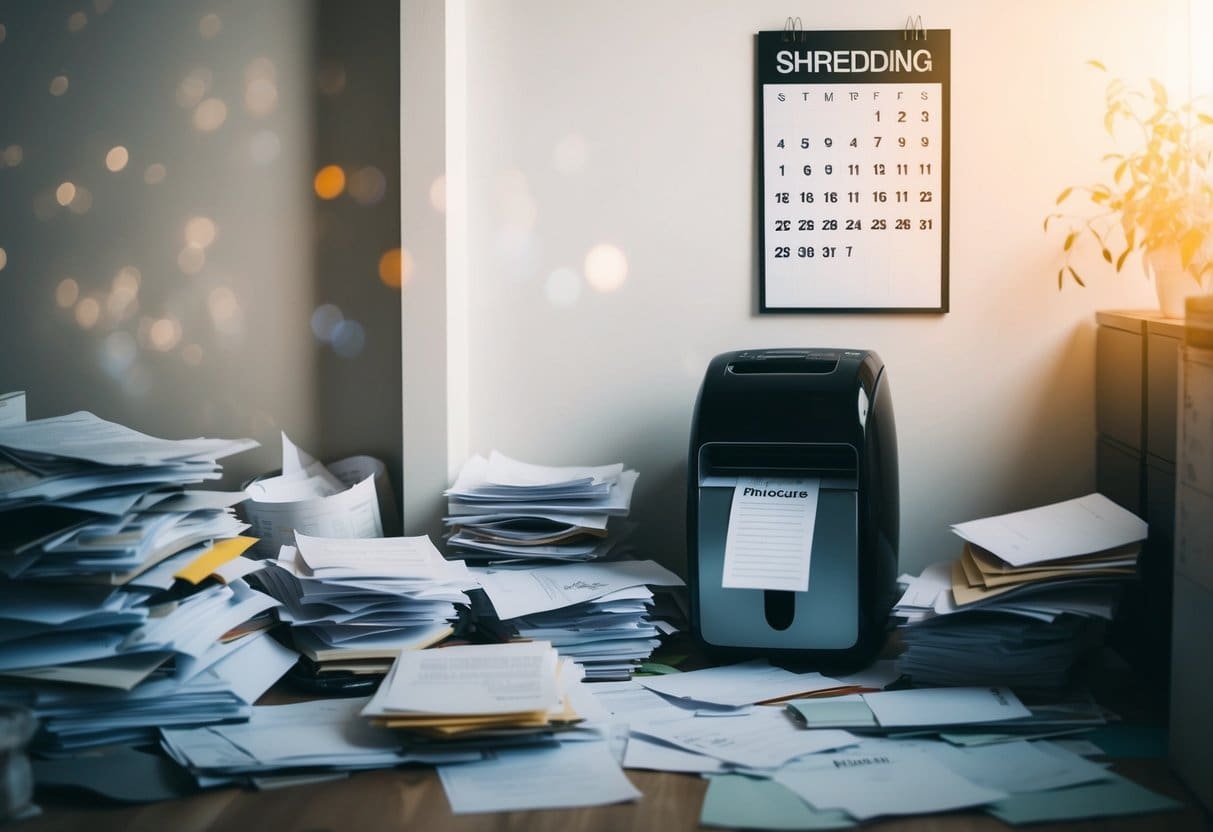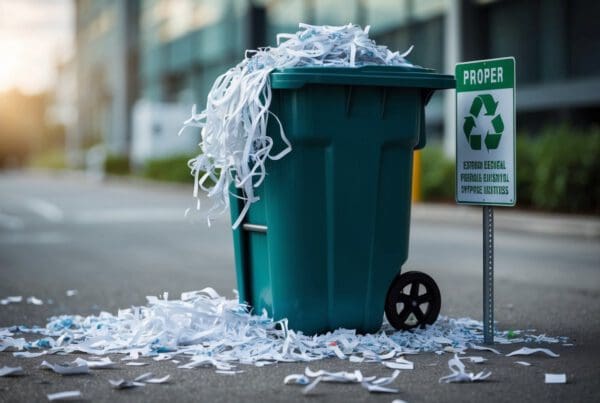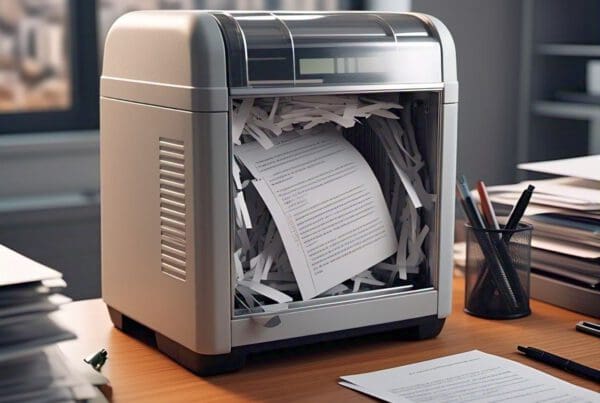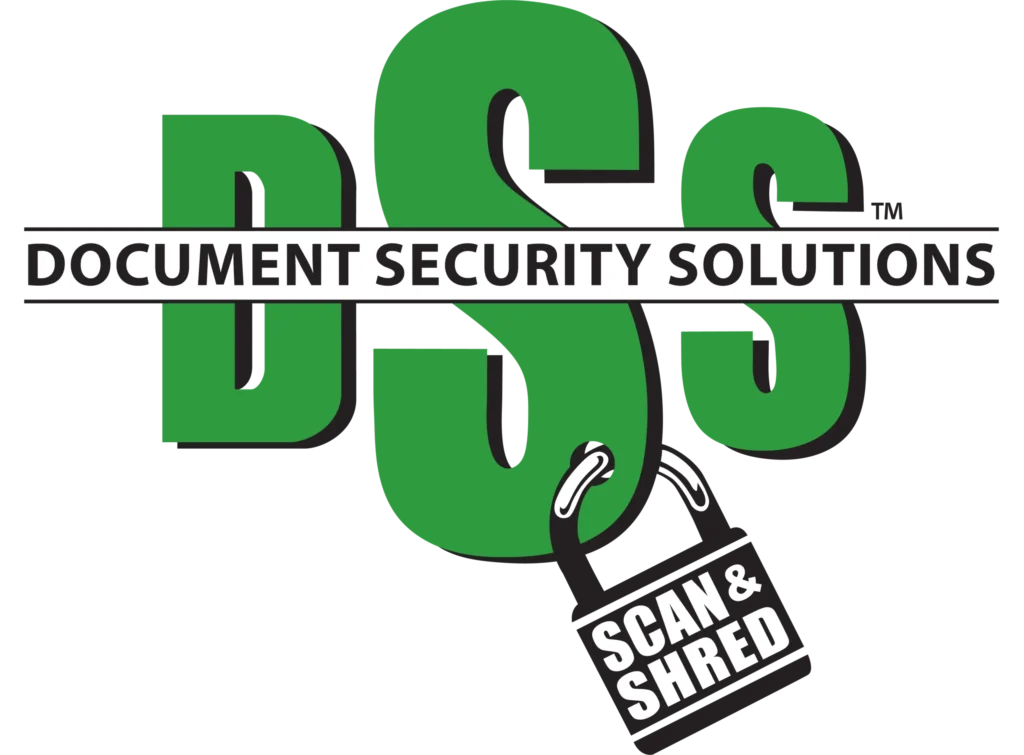Fundamentals of Shredding Schedules

Creating a shredding schedule helps us manage sensitive documents securely. This process protects against identity theft and ensures that document destruction happens regularly, keeping our information safe.
Understanding Shredding Schedules
A shredding schedule is a plan that tells us when to destroy certain documents. It includes specific dates or intervals for reviewing and shredding papers we no longer need. Following a schedule means we won’t forget to destroy papers that contain confidential information.
Regular shredding not only saves space but also reduces clutter in our homes. We know exactly when papers need to go through the shredder, making it easier to keep track of everything. To start, we can list our documents and decide how often they should be destroyed.
To make our schedule effective, we should categorize documents based on sensitivity. This categorization helps determine which papers should be shredded more often. Important papers might include old bills, expired IDs, and outdated medical records. With clear guidelines, we can ensure documents are only kept for as long as necessary.
Importance of Document Destruction
Shredding documents is a key step in preventing identity theft. Many sensitive documents contain personal information like Social Security numbers or bank details. If these documents fall into the wrong hands, they could be misused.
When we destroy documents regularly, we lower the risk of having private information exposed. It gives us peace of mind knowing sensitive data is not left lying around. We are taking active steps to protect ourselves.
Routine document destruction also helps increase privacy. It’s not just about throwing papers away but securing our personal information. By sticking to a shredding schedule, we ensure our private data remains secure and confidential.
Designing an Effective Shredding Plan
Creating a shredding plan requires understanding our needs, setting goals, and crafting a strategy that fits our lifestyle. An efficient plan helps manage clutter and ensures timely destruction of sensitive documents.
Assessing Your Shredding Needs
First, we should look around our home and identify what kinds of documents require shredding. Sensitive materials, such as bank statements, medical records, and old bills, should be on our list.
It’s helpful to categorize these into frequent, monthly, and yearly shredding. Frequent shredding might be weekly mail items, while monthly shredding could include bank statements or receipts. Storing documents in the right category keeps us organized and improves efficiency.
We should also consider if there’s a level of compliance we need to meet, especially for healthcare or financial documents. Understanding these needs helps us decide if a professional shredding service is necessary.
Setting Up Decluttering Goals
To stay organized, we need clear decluttering goals. This step involves setting timelines and targets that match our lifestyle, making it easier to stick to our shredding plan. Manageable chunks of time work best, ensuring we don’t feel overwhelmed.
For instance, we may decide to shred documents once a week, or focus on specific rooms each month. Breaking tasks into smaller actions creates a sense of achievement as we meet each goal.
Decluttering isn’t just about getting rid of paper. We should also plan how to manage incoming documents to prevent future buildup. This way, our living space stays tidy and clutter-free.
Creating a Customized Shredding Strategy
Crafting a shredding strategy is our next step. A good strategy accounts for the frequency, volume, and type of documents we handle. Should we invest in a home shredder, or would a shredding service be more efficient?
We might integrate shredding into our existing cleaning routine, ensuring it’s not an additional burden. Using a checklist can help track important shredding dates and keep us consistent.
Integration with digital storage solutions could also be useful. Digitizing some documents before shredding can save physical space and keep us more organized. Adjusting our strategy based on our evolving needs ensures the plan remains effective over time.
Shredding as a Decluttering Tool
Shredding can help us reduce paper clutter and organize our living spaces. By including shredding in our regular cleaning schedules, we can make our homes tidier and more efficient.
Breaking Down Decluttering Tasks
When we think about decluttering, it’s essential to organize tasks into manageable steps. Tackling everything at once can be overwhelming. Instead, let’s focus on specific areas such as desks, file cabinets, or mail piles.
A decluttering schedule helps us decide when to sort through papers. We can use lists or charts to track what needs shredding—this keeps us on track and ensures that nothing is overlooked. Simplifying our approach makes paper management easier.
Integrating Shredding into Cleaning Routines
Incorporating shredding into our cleaning routines ensures consistent progress. We can set specific times and days for shredding as part of our regular cleaning plan. Having a habit of handling paper daily stops buildup.
For instance, after dealing with mail each day, we can sort and shred unnecessary items right away. By doing this, we integrate shredding into our everyday tasks naturally. Creating a pattern in our cleaning schedule makes it second nature to keep paper clutter to a minimum.
Implementing the Shredding Schedule
Creating a shredding schedule helps us manage sensitive documents efficiently. We’ll handle tasks that are daily, weekly, or monthly. Keeping up with these tasks ensures our safety and privacy.
Daily, Weekly, and Monthly Shredding Tasks
Organizing our shredding into daily, weekly, and monthly tasks makes it manageable. Daily tasks might include disposing of personal mail, old receipts, and outdated notes. Weekly tasks often involve shredding bank statements and payment stubs.
For monthly tasks, we should focus on reviewing larger document accumulations like old bills and expired contracts. These different time frames help ensure we never fall behind while protecting sensitive information.
Ensuring Compliance and Security
Our shredding routine must be secure and compliant with any privacy laws we face. Having a locked area for storing items to be shredded can prevent unauthorized access. Regularly maintaining our shredders ensures they stay in good condition and function properly.
It’s also smart to keep track of what’s shredded, perhaps by maintaining a simple log. By doing this, we make sure we’re consistently meeting our security needs and staying organized.





